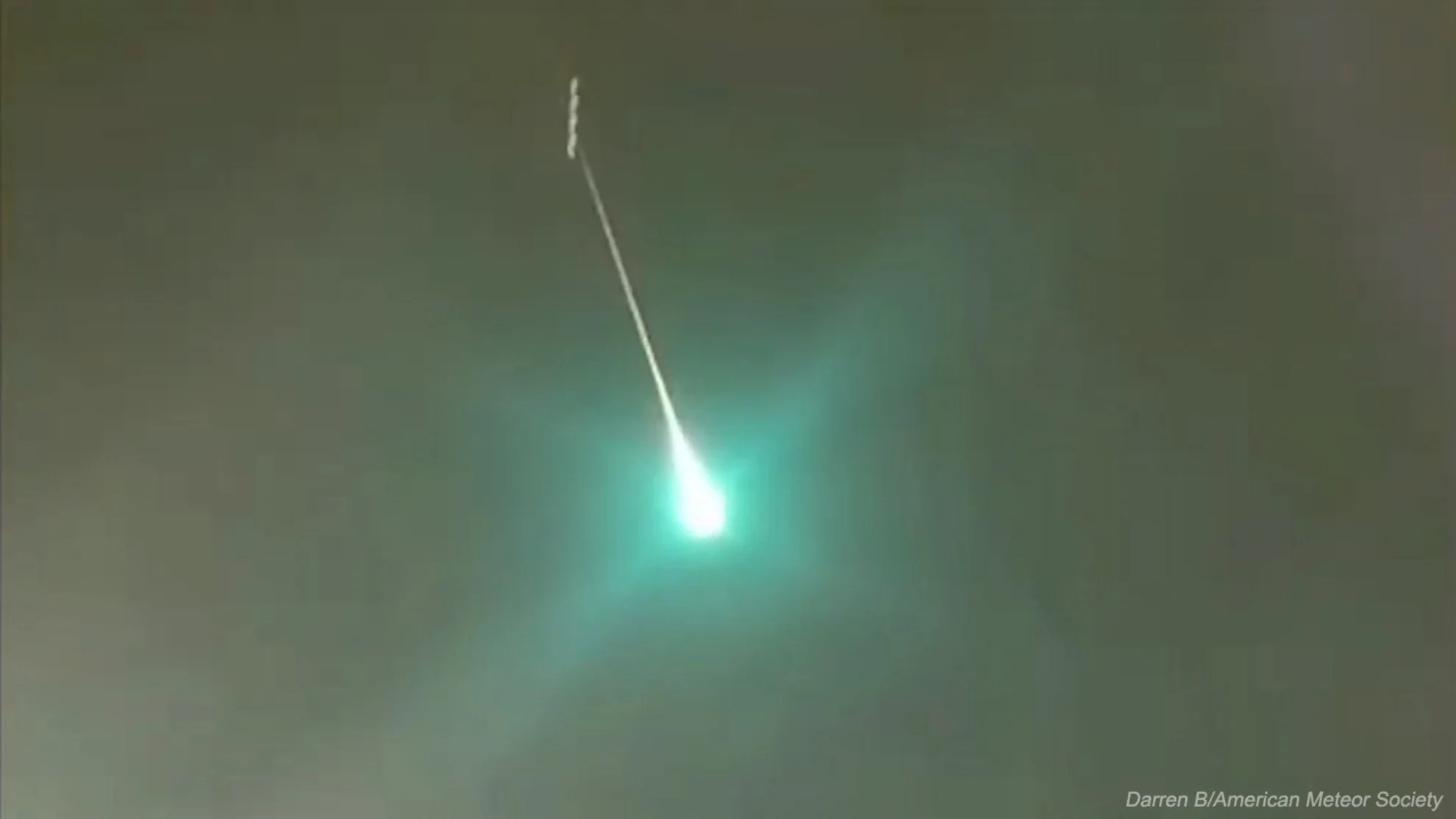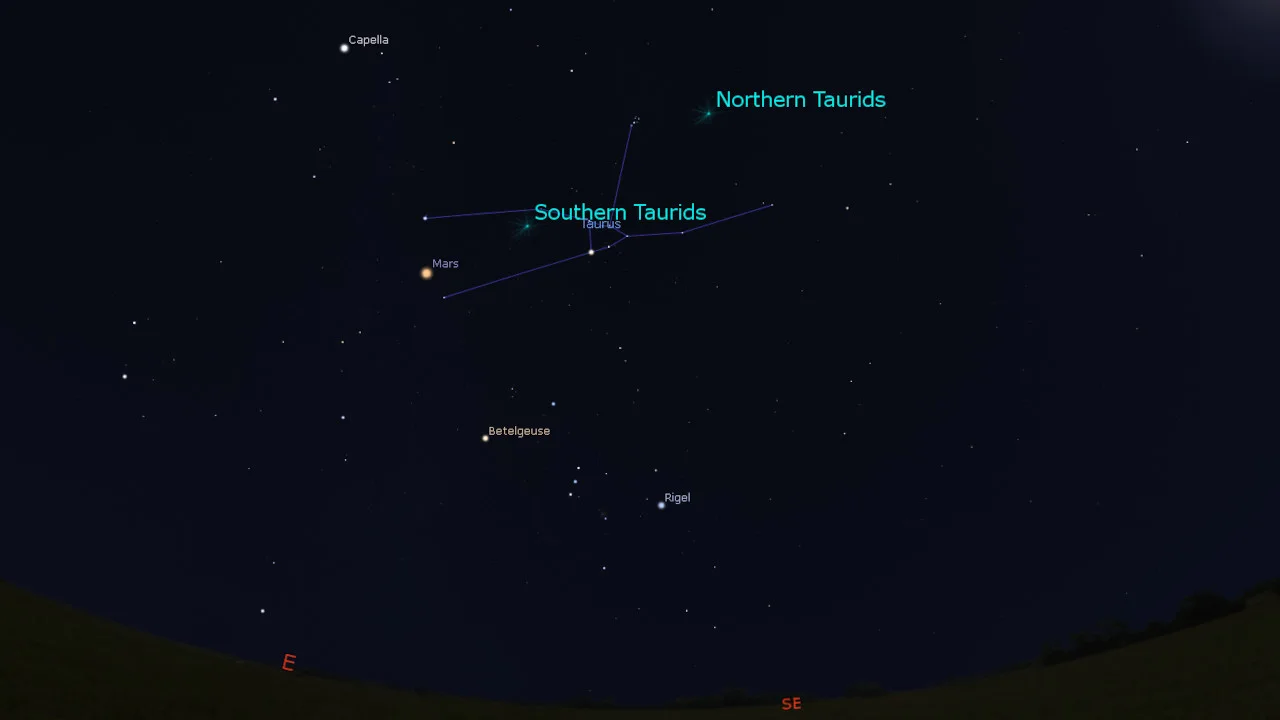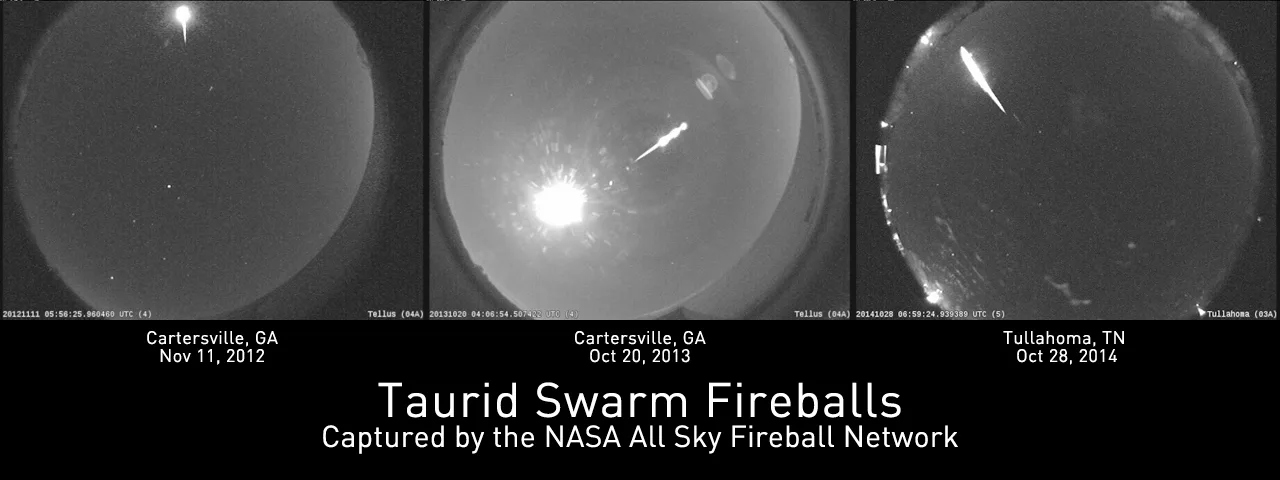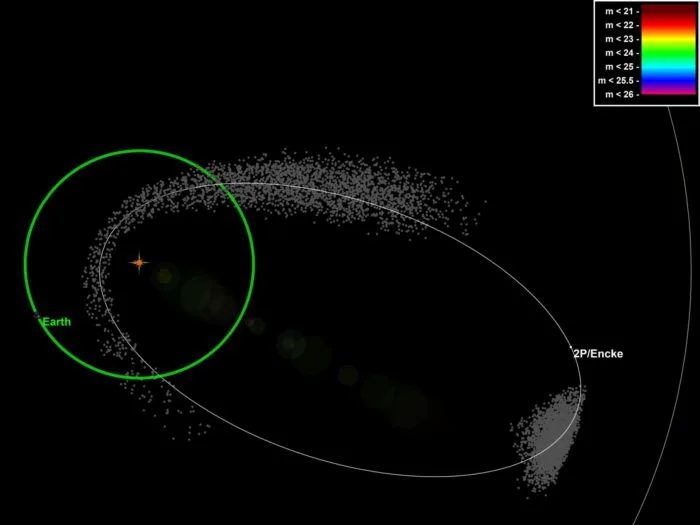
Fireballs from the Taurid Meteor Swarm may streak across our night skies
Watch for bright meteors each night over the next two-and-a-half weeks.
We may see a dramatic uptick in the number of fireballs flashing through the night sky over the next few weeks, thanks to the Taurid meteor swarm.
Every year, from September to November, Earth is pelted with ice and dust from a pair of wide, overlapping debris streams in space. As a result, twin meteor showers light up our night skies, originating from the constellation Taurus.

The Northern and Southern Taurid meteor showers appear to originate from the constellation Taurus. The source of these two meteor showers is likely the same object — an ancient shattered comet. Credit: Stellarium
Even with two meteor showers active in the same part of the sky at the same time, though, the 'Taurids' are usually fairly weak. While the August Perseids or December Geminids, alone, can produce up to 100 meteors per hour during their peak, we typically only see a handful of meteors each hour from the Taurid showers, even at their best. This is because the meteoroids in the Taurid debris streams are fairly spread out. So, on any given year, the part of the stream Earth passes through is usually fairly sparse.
However, this is not always the case! Embedded within the stream is a collection of larger meteoroids known as the Taurid Resonant Swarm. During the years when Earth encounters this swarm, the gravel-sized debris causes Taurid fireballs to light up the night.

Three Taurid fireballs captured by the NASA All Sky Fireball Network in 2012, 2013 and 2014. Credit: NASA
The last time we apparently saw a similar event from the Taurid swarm was in 2015. According to Western University meteor expert Peter Brown, there was unusually high Taurid activity that year.
"Our Southern Ontario Meteor Network cameras caught 54 Taurid fireballs from Oct. 31 to Nov. 4 alone, compared to 22, 18, and 32 Taurids for the entire month of November in 2014, 2013 and 2012 respectively," Brown told Spaceweather.com at the time.
This year, astronomers are expecting the Taurid swarm to make a return appearance.
As a result, each night from October 24 to November 11, we could see an unusually high number of fireball meteors. The best time to watch is in the hours around midnight, when the constellation Taurus is high in the sky.
What will we likely see?
Typical meteors can appear bright when viewed under dark skies. However, they usually can't compete with urban light pollution. This is why we advise stargazers to get as far away from city lights as possible to watch a meteor shower.
To see fireballs from the Taurid swarm, though, you can watch from pretty much anywhere. You really only need three things: reasonably clear weather, a good view of the night sky, and patience.
As always, patience is a necessity for these events. Even in the best-case scenario for a Taurid swarm appearance, we won't be seeing hundreds of fireballs throughout the night. Even the numbers reported by Peter Brown back in 2015 only amounted to around one fireball every hour.
However, that's still far more than we usually see at this time of year! So, if you're out and about at night over the next few weeks, don't be surprised if you spot a few exceptionally bright meteors streaking across the sky!
Dangers in the Taurid swarm?
According to Denis Vida, a meteor researcher at Western University, astronomers are interested in finding any larger objects that may be embedded within the Taurid resonant swarm.
"Some have theorized that it might hold 100+ m asteroids and be the only known concentrated source of Potentially Hazardous Objects," Vida said in a Tweet on Wednesday. "We're organizing an observing campaign to map it out!"
Potentially Hazardous Objects are near-Earth asteroids and comets that come within about 20 times the distance to the Moon, and are large enough to cause considerable damage if they were to hit us. According to NASA, there are 2,270 known potentially hazardous asteroids, which amounts to around 8 per cent of the population of near-Earth objects. Of those, only 17 are actually on NASA's Sentry Risk Table, with each having a very small chance of striking Earth at some point in the decades ahead.
There are two known large objects in the Taurid streams — asteroid 2004 TG10 and comet 2P/Encke (the sources of the Northern and Southern Taurid meteor showers, respectively). Neither of these is considered to be a threat to us.

The orbit of the Taurid meteor stream around the Sun is plotted in this diagram, along with the Taurid Resonant Swarm. Credit: Western University
However, there is a suspicious bit of timing between when Earth passes through the 'outbound' section of the Taurid stream (from early June to mid-July) and one of the biggest impacts in recent history — the June 30, 1908 Tunguska Event.
This coincidence has some researchers wondering if the object that exploded over Siberia, around 114 years ago, originated from the Taurid stream.
Locating any larger objects in the Taurid swarm as it passes may solve the mystery of what happened on June 30, 1908. At the same time, it could also give us a better idea if the swarm poses any danger to us in the future.
(Thumbnail image courtesy DarrenB/AMS)
Editor's note: a previous version of this article referred to one of the large objects in the Taurid stream as "1P/Encke". The actual name of this comet is 2P/Encke, as it is the second recorded periodic comet (with Comet Halley being 1P/Halley, the first recorded period comet). This has been corrected, and we apologize for any confusion this error may has caused.
